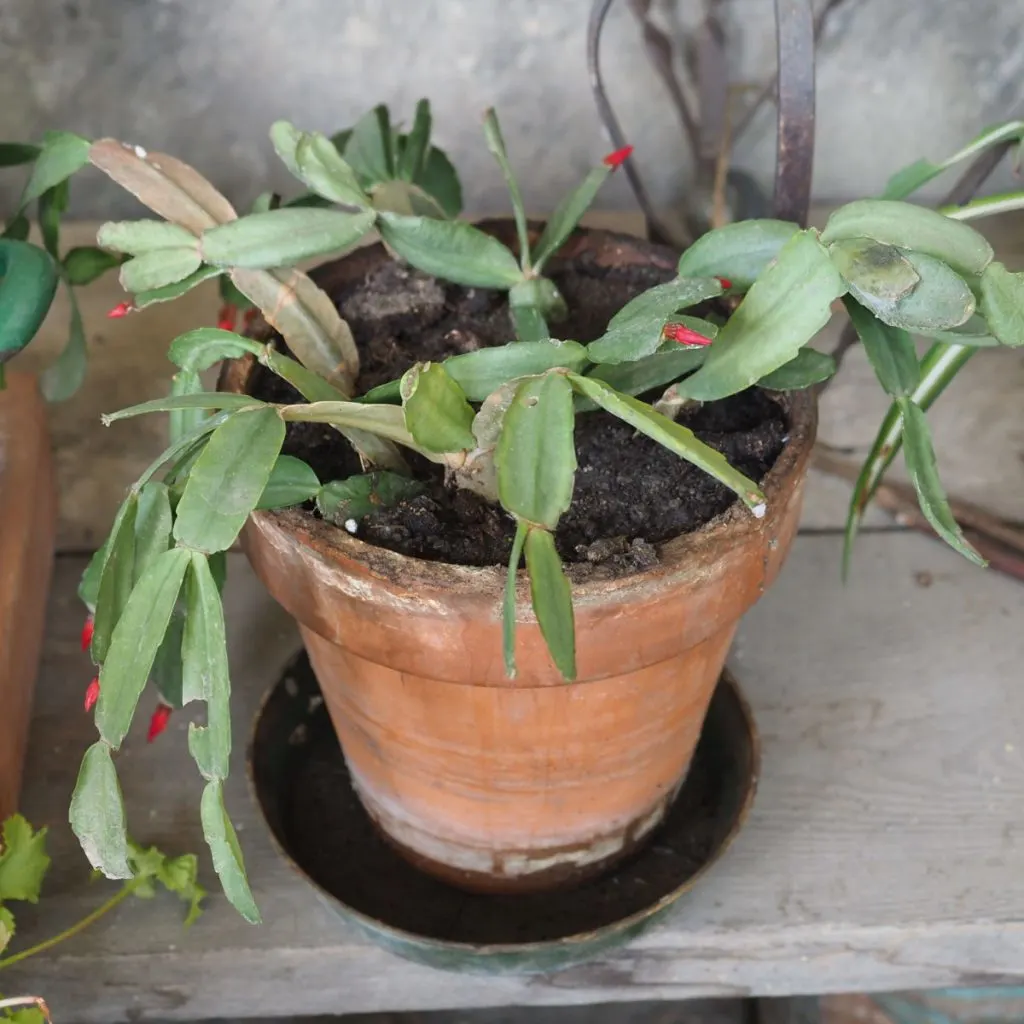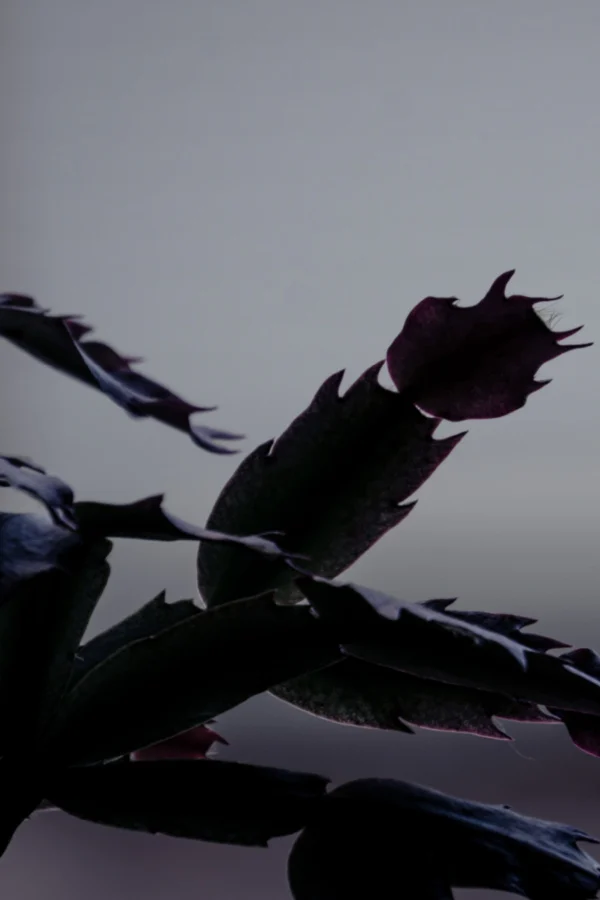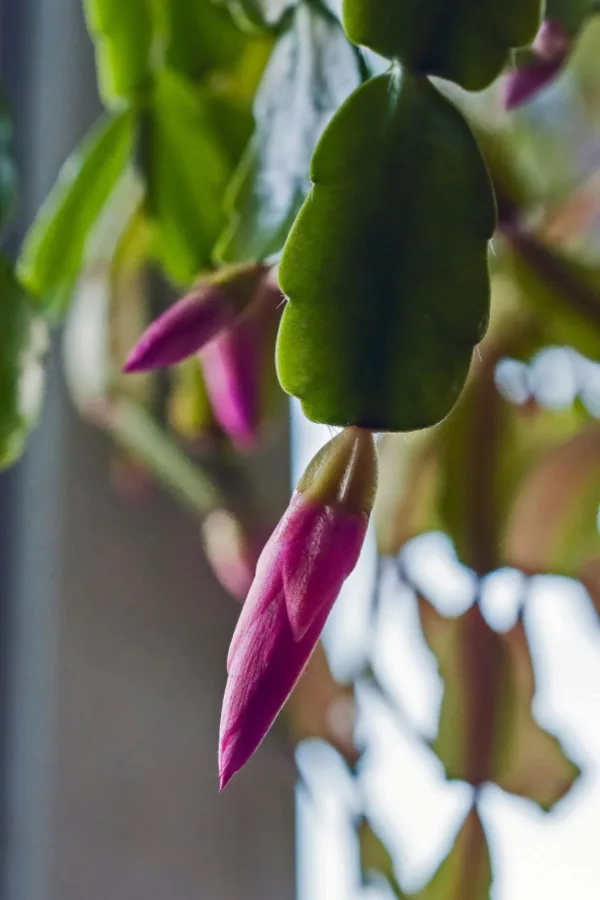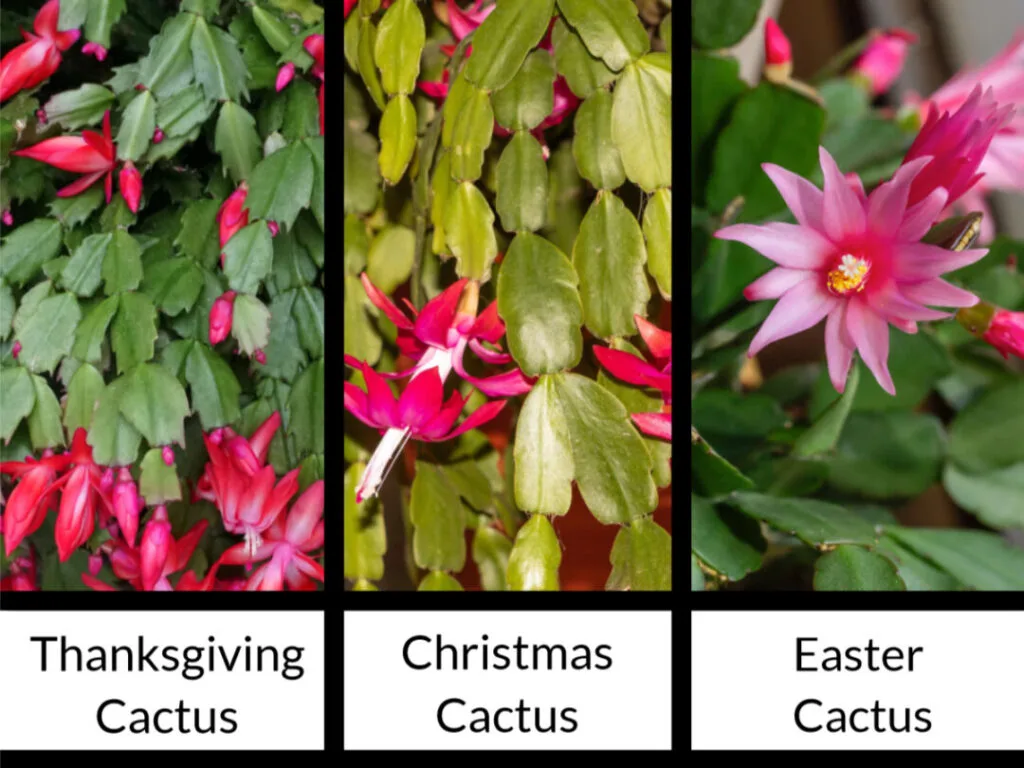When it comes to getting your Christmas cactus to bloom big all through the holiday season – it comes down to avoiding 3 of the biggest and most common mistakes that can all but ruin their blooms!
Although the Christmas cactus is cherished for its colorful blooms during the holiday season, when the plant fails to bloom or blooms poorly, it can cause a lot of frustration for gardeners. While this tropical plant is often thought to be easygoing, one thing is for sure, many gardeners struggle to coax it into blooming.
Unfortunately, the frustration almost always stems from three common mistakes – failing to provide the correct pre-bloom care, over or underwatering the plant, or exposing their plant to too much direct sunlight.

The 3 Biggest Mistakes That Ruin Christmas Cactus Blooms
#1 Failing To Give Your Cactus A Darkening Period
One of the biggest if not the biggest reason Christmas cacti often bloom poorly is that they were not properly prepared.
The Christmas cactus is a short-day plant. That means its blooming cycle is triggered by specific light and dark conditions. And one of the most common mistakes gardeners make is neglecting to simulate the natural darkness and light cycles the plant needs to prepare its blooms.
If your Christmas cactus is exposed to too much artificial light in the evenings, or if it’s placed in a well-lit room, it won’t receive the darkness it needs to initiate blooming. And it can result in a plant that looks healthy but fails to produce buds.
So how do you fix this issue? Starting in mid-September to early October, it’s vital to give your Christmas cactus 12–14 hours of uninterrupted darkness each night. You can achieve this by placing it in a dark room, covering it, or storing it in a closet.

But along with the darkness, the cactus needs to be in a cooler environment. As in areas that stay between 55 to 60°. Avoid placing the plant near drafts, heaters, or vents during this time. This combination of darkness and cooler temperatures promotes bud formation.
Maintain this schedule for 6 to 8 weeks. Once buds appear, you can then return the plant to its usual spot and resume a normal care routine. For more watering tips when it comes to holiday blooming houseplants, see The 3 Biggest Mistakes That Ruin Poinsettia Blooms – How To Keep Poinsettias Blooming Longer!
#2 Over / Underwatering – The 3 Biggest Mistakes That Ruin Christmas Cactus Blooms
The next biggest mistake that can keep a Christmas cactus from blooming is over or underwatering your plant. Unfortunately, a Christmas cactus is often mistaken for a true desert cactus. And that is exactly what leads to watering issues!
In reality, the Christmas cactus originates from tropical rain forests. And it is there that it grows in a much more humid environment than a desert would ever provide. Which is why it needs to have far more water than a traditional cactus.
Underwatering a Christmas cactus can cause serious stress to the plant. It can lead to shriveled, dry segments and limited growth. Even more, a dehydrated Christmas cactus will conserve energy, putting its bloom cycle on hold until conditions improve – or until next year!

The Issue With Overwatering – The 3 Biggest Mistakes That Ruin Christmas Cactus Blooms
But just as underwatering is an issue, so is overwatering. Overwatering is a common culprit when a Christmas cactus refuses to bloom or begins to drop its buds. The plant’s roots are particularly sensitive to sitting in water, which can lead to root rot.
Symptoms of overwatering include yellow, mushy leaves, a wilted appearance despite moist soil, and a foul smell from the potting soil
So what is the best way to hydrate your Christmas cactus? Water only when the top 1–2 inches of soil feel dry to the touch. In most indoor environments, this means watering about once every 1–2 weeks.
It’s also important to always use a pot with drainage holes and a well-draining potting mix. Finally, it’s also critical to reduce watering in the late fall when preparing the plant for its bloom cycle. You can then resume a moderate watering schedule as buds appear.
#3 Too Much Direct Sunlight – The 3 Biggest Mistakes That Ruin Christmas Cactus Blooms
Lat but not least, the 3rd mistake made all too often with a Christmas cactus is giving the plant far too much direct lighting, whether it be sunlight or artificial light.

While light is a big part of any plant’s growth, the Christmas cactus thrives in indirect lighting conditions. All too often, growers place their plant in direct sunlight, thinking it will boost growth and blooming.
In its natural habitat, the Christmas cactus grows under the canopy of tropical trees, where it receives filtered sunlight. Because of this, if it gets too much light, problems are quick to arise. Exposing it to direct sun can scorch its fleshy leaves, causing them to turn red or brown. Even more importantly, prolonged exposure to full light can stunt growth and delay blooming.
Always place your Christmas cactus in a location with bright, indirect light. A north or east-facing window is ideal. Also be sure to turn the plant occasionally to ensure even light exposure, which will help maintain a balanced shape.
A Few Extra Tips – The 3 Biggest Mistakes That Ruin Christmas Cactus Blooms
It’s best not to fertilize your cactus in the fall or while its blooming. Instead, feed your Christmas cactus with a balanced, water-soluble fertilizer in early spring through late summer. Stop fertilizing by late summer to start encouraging blooming. Affiliate Link: Christmas Cactus Fertilizer for All Christmas Cacti

Make sure your cactus is in the right pot for success as well. Christmas cacti prefer slightly crowded roots, so avoid frequent repotting. Repot only every three to five years, ideally in the spring. Always use a fresh potting mix to replenish nutrients in the soil. If you are looking for a simple & inexpensive approach to decorate for the holiday season, be sure to see How To Make Christmas Decorations From Hanging Baskets, Pots & Window Boxes!
Here is to avoiding the three biggest mistakes that often ruin the blooms of a Christmas cactus – and to getting your plant to flower big this holiday season! For more on Christmas cactus care, check out our article: How To Make A Christmas Cactus Bloom Again – Get Your Cactus To Bloom A 2nd Time!
Simple Garden Life
Follow Our Facebook Page For Even More Great Tips! Simple Garden Life Facebook Page
Simple Garden Life is a website dedicated to keeping gardening fun, simple and enjoyable! We publish two new articles each week along with a new garden podcast episode every two weeks. This article may contain affiliate links.
